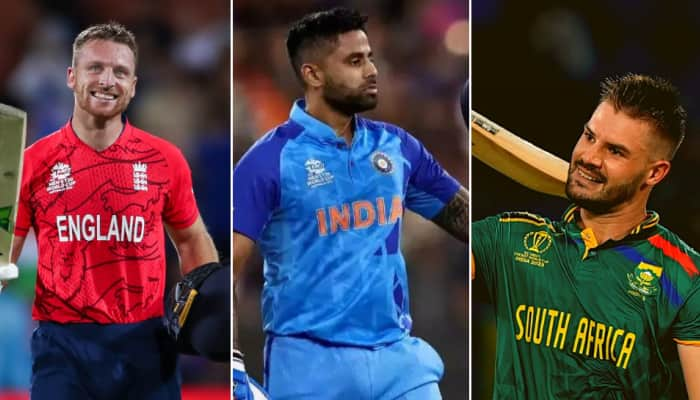SAARC Summit 2014: Lofty dreams, harsh realities
Trending Photos
)
Much as in humans, the aim of a “Union” even when related with sovereign countries, is to expand a domain for the benefit of those uniting. The gain could be emotional, financial or related with security.
For countries coming together to form a unit, the emotional gain is more in the form of strategic leverage, where countries endorse each others’ policies in the international fora. Financial assistance comes with greater flow of goods, services, people and, of course, more investments; and improved security is based on military aid and assistance much like what has been seen in Nato countries.
Undoubtedly, the benefits of “coming together” are enormous, and thus there has been a mushrooming of blocs and unions all across the globe. But, as in life, the primary factor for a union to be successful is trust.
It goes without saying that an alliance that is underlined with mistrust can never be successful or realize its true potential. This is the story of South Asian Association for Regional Cooperation or SAARC, in long and short of it.
When Dhaka proposed an association of the inner circle countries of South Asia – India, Pakistan, Bangladesh, Nepal, Sri Lanka, Maldives and Bhutan - the two biggest players India and Pakistan were sceptical, but went along to form a bloc in the 1980s, aiming to extend cooperation on tame subjects like Agriculture, Population, Rural Development, Telecommunications, Health and Meteorology.
Nearly 30 years later, member states - particularly the two largest neighbours - remain deeply suspicious of each other, and thus the association too remains in knots.
The South Asian nations are yet to achieve any real breakthrough or achieve multilateral progress which will yield monetary dividends or empower people of the region.
For example, under South Asian Free Trade Area (SAFTA) agreement, all the countries of the region are aiming to reduce customs duties on traded goods to zero by 2016, but can markets really be integrated when a country like Pakistan is yet to fully extend the Most Favoured Nation status to India to remove the list of negative items for trade! Other smaller countries like Bangladesh, Sri Lanka and Nepal also fear making the entire region a free trade zone, as they feel it would amount to Indian goods flooding their markets and stifling growth of their small but domestic companies. Where is the wonder then, when statistics show that regional trade remains below a paltry 5%.
The Association is particularly defunct when it comes to the question of strengthening security of the region, as more than one country in the region has malicious intents towards the others and is busy exporting terror to wreak havoc on the lands and people of its immediate neighbours.
The other dimension adding complexity to already existing woes is the active participation of outsiders in the region. The United States is an active counter-terrorism participant, and is playing a high stakes game especially in the Af-Pak region. China has always wanted to gatecrash SAARC, and is being abundantly helped by Pakistan, Nepal and Bangladesh in its endeavour - all three countries get doles in return of China being allowed a foothold. There is sufficient debate already about whether China should be allowed to join SAARC, but if the dragon nation does manage to come on board, it will probably be last nail in SAARC’s coffin.
Look at the European Union in contrast – it is the example of one of the most successful federations. Countries with extremely acrimonious past relations and having had fought World Wars against each other, have put their past behind to come together and raise a toast to celebrate genuine collaboration.
Sensing that the bargaining power of any country alone will be limited, Europe mostly speaks in one voice lending weight to the stand that they unitedly take. Their level of integration is so evolved that the entire continent operates more or less like a single country, as far as common currency or visa-free movement of people is concerned. Companies find it easy to put money in Europe as a whole and movement of goods is not restricted by borders. All countries have universal norms, in terms of labour laws, acceptable levels of fiscal deficit, providing visas to outsiders, human and development indices and even have similar policies on methods of building and maintaining something like highways!
Importantly, there is generosity. When a country like Greece faces a financial crisis, other countries don’t allow it to be left behind completely. Countries like Germany, with its solid coffers, pours in money to pull up weaker nations - something that is clearly unimaginable in South Asia.
The results that EU has been able to reap are for all to see – there has been substantial per capita gain for nearly all countries and the enlargement of its market means EU has become a humongous trading bloc with a GDP of over Euro12.6 trillion.
All EU Citizens are equal – they can work, buy property and settle anywhere in the region and are covered by common health and life insurance policies. The region has a common Parliament which drafts broad guidelines and rules that will govern the region.
APEC is another example of successful cooperation and has become one of the world’s most dynamic units economically, accounting for over USD 16 trillion in trade and involving 40% of the global population. The bloc’s real GDP when measured as per Purchasing Power Parity has laudably doubled since its inception in 1989. The organization has a three pronged approach that concentrates on Trade and Investment Liberalisation, Business Facilitation and Economic and Technical Cooperation.
But for such teamwork to succeed, obstructions need to come down and so they have in APEC. From a trade barrier scale of 16.9% in 1989, hindrances had been slashed to 5.8% by 2010; a reduction of more than half had been enabled through a series of well thought out and thrashed out agreements, which have enabled paperless systems for all member economies, covering payment of duties, and customs and trade-related document processing. Also the Single Window Strategic Plan allows importers and exporters to submit forms just once through a single system of entry.
The bloc also contributes funding to around 100-150 projects each year and has set up a network of APEC Digital Opportunity Centers to remove the digital divide in the region and allow access of electronic facilities to all.
Countries under APEC also have common treaties on counter-terrorism, human security, emergency preparedness, climate change, energy security and clean development.
Similarly, the Asean Economic Community (AEC) proposes to generate additional 14 million jobs by 2025 and improve the livelihood of 600 million people across all 10 Asean member states, as per of study conducted by Asian Development Bank and the International Labour Organization.
Even within Africa, five countries of the East African Community (EAC) have agreed to form a monetary union within 10 years while West African countries have agreed on a plan to introduce a new single currency.
As far as the Shanghai Cooperation Organisation is concerned, the union aims to act as the alternative voice on global affairs, with members comprising China, Russia and some breakaway Soviet nations. The association is witnessing increased military, security and intelligence sharing activities. China, being the bigger economic power and a rising star, is pledging financial assistance to the smaller countries and will in turn buy strategic leeway.
Another good example of putting away differences for evolving greater advancement is Brazil, Russia, India, China and South Africa (BRICS), where all the emerging economies have come together in the hope of acting as a counterweight to the association of developed countries – the G8.
At a time when blocs have reached a point when they issue common passports, our level of cooperation at SAARC extends to preparing a document on environment or helping each other’s UN peacekeeping troops!
Any other theory that is floated about perceptible progress through integration is more like gaslighting ourselves. Decades after setting up SAARC, we are still talking about symbolic gestures like SAARC University and a SAARC satellite, but on the ground, we remain as divided and prone to aversion as always.
The 18th SAARC Summit is taking place in Kathmandu, Nepal where the biggest challenge once again will be to remove stumbling blocks to pave the way for sincere and meaningful cooperation.
But that is likely to remain as much a mirage as it can be for two people trapped in unhappy matrimony.







)
)
)
)
)
)
)
)
)
)
